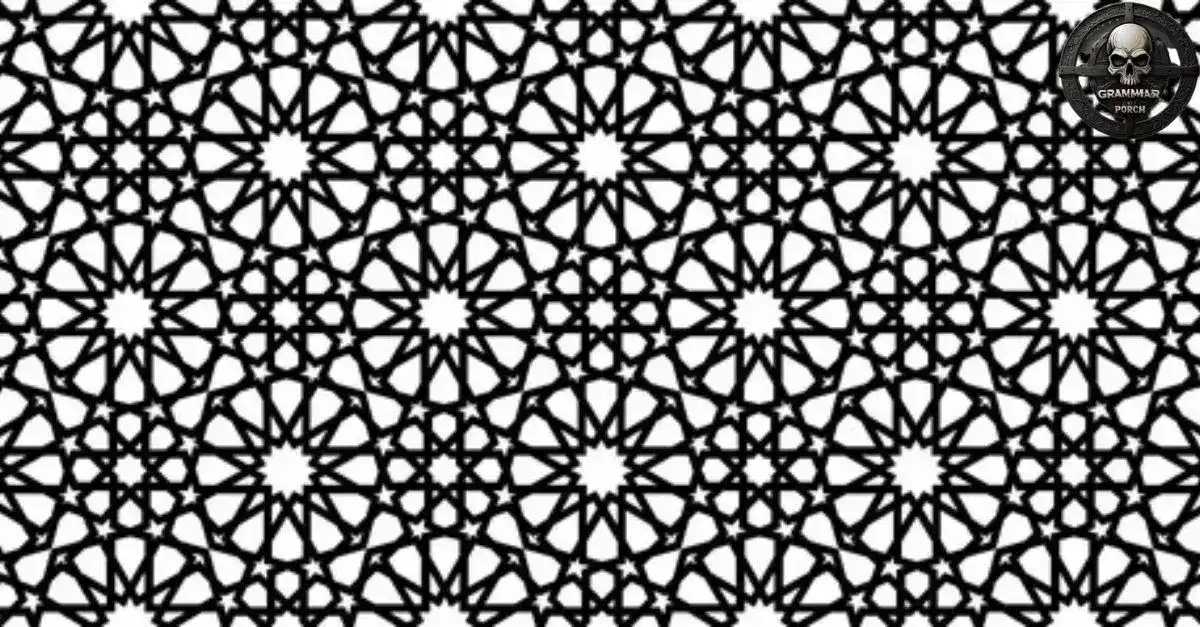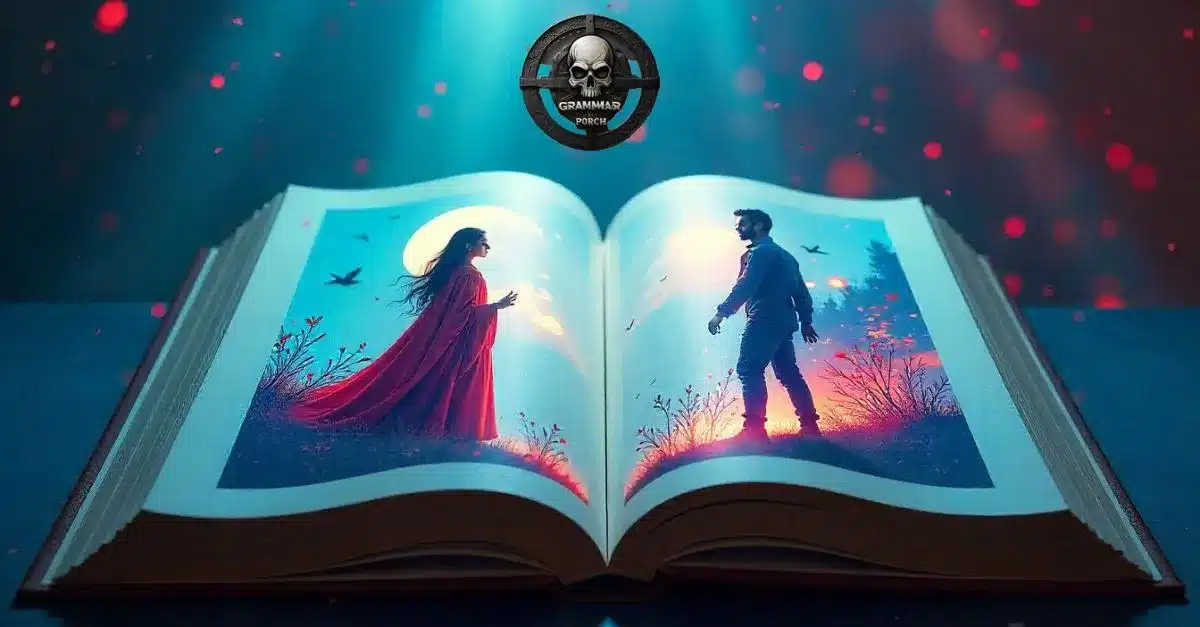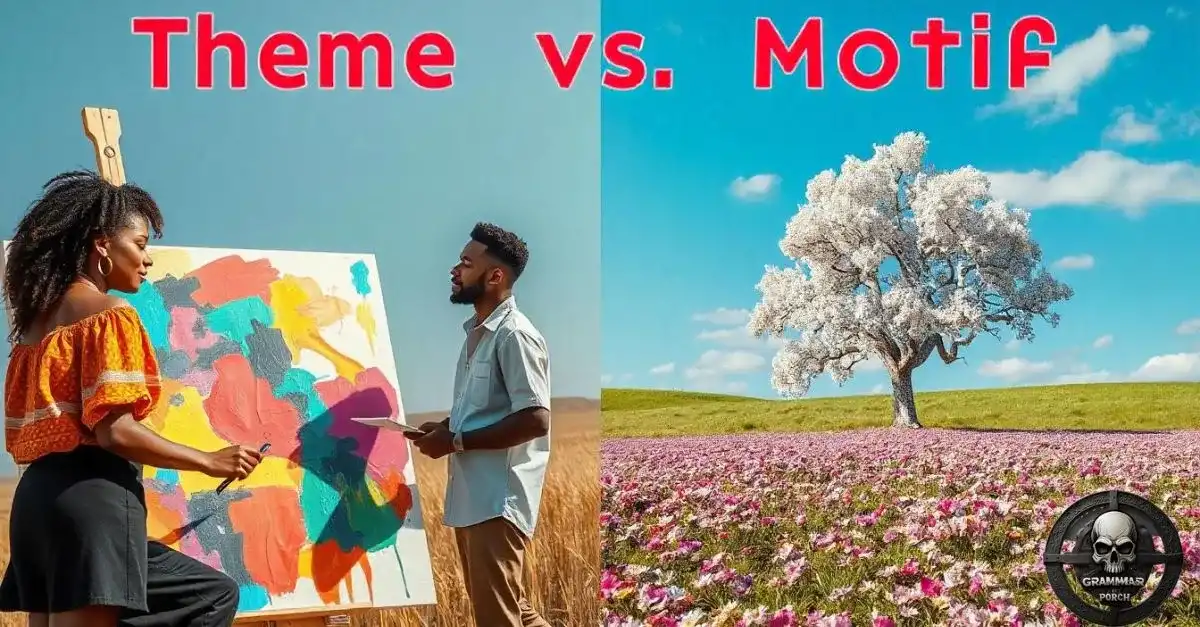In any literary work, two elements often shape the narrative theme and motif. While these terms may seem interchangeable, they have distinct roles in storytelling. Understanding the theme vs motif difference is crucial for anyone analyzing or interpreting literature.
This guide will break down these key concepts, show their differences, and offer deep insights through motif examples and literary analysis of famous works.Both theme and motif help create depth in any work of literature, guiding the audience to uncover the underlying messages and explore the narrative’s recurring elements.
What is a Motif?

- A motif is a recurring element an image, idea, symbol, or object that repeats throughout a narrative.
Motifs help reinforce the main ideas of the story and often contribute to the overarching theme in literature. A motif can appear in various forms, such as a recurring color, phrase, or even a setting.
For example, in literature, water often acts as a symbolic motif representing change or purification. It is crucial to understand that motifs are not the message themselves but tools that convey or enhance the overall message of a story. By repeating these elements, a work of literature provides subtle reminders to the audience, creating depth and encouraging interpretation.
Types of Motifs
Motifs are categorized into different types depending on their function within a narrative. Below are some common types:
- Symbolic Motifs: These are objects, colors, or symbols that recur. For instance, the color red in Nathaniel Hawthorne’s The Scarlet Letter represents both sin and passion.
- Narrative Motifs: These focus on recurring plot structures or events. For example, journeys are a common motif in classic literary works, representing personal growth.
- Abstract Motifs: Ideas such as freedom, death, or isolation that keep surfacing throughout the narrative are abstract motifs. These motifs make audiences reflect on broader thematic elements.
Motifs in literary analysis are critical as they highlight the most important elements and connect different parts of the narrative. Whether they are repeated elements or recurring symbols, motifs make storytelling richer and more meaningful.
What is a Theme?

A theme is the central or overarching idea behind a story.
Unlike a motif, which is a repeated element, the theme conveys the overall message or insight the writer intends to communicate. Themes in literature address the big questions about life, human nature, or societal issues. Common key themes in literary works include love, power, identity, and morality.
For example, in George Orwell’s 1984, the theme of surveillance and control over society dominates the narrative. Themes reflect the moral and philosophical foundations of a story, making them integral to understanding a work of literature.
In many cases, multiple themes exist within a single story, often interacting with one another. While themes can be universal, they always reflect the specific literary work in which they appear, offering readers a glimpse into the deeper meanings and truths explored by the author.
Types of Themes
Themes come in various forms, depending on the nature of the story:
- Universal Themes: These are themes that appear across different cultures and times. Examples include good vs. evil, the struggle for power, and the pursuit of happiness.
- Cultural Themes: These themes focus on particular societal issues, such as racism or inequality. They are specific to certain historical periods or communities but are still relevant in modern literature.
- Moral Themes: These highlight the ethical dilemmas faced by characters, often reflecting broader moral questions. Examples include themes of justice, forgiveness, or revenge.
Themes are what make stories memorable. They resonate deeply with readers and remain relevant long after the narrative has concluded, offering enduring literary themes for exploration and discussion.
Motif vs Theme: The Key Differences

The difference between motif vs theme is that motifs are concrete repeated elements, while themes are abstract ideas. A motif may be an image, phrase, or action that recurs throughout a story, reinforcing the key themes.
On the other hand, a theme is the underlying message or idea the story is trying to convey.
Example:
- Motif: In The Great Gatsby, the green light at the end of Daisy’s dock is a recurring motif symbolizing Gatsby’s unattainable dreams.
- Theme: The theme in literature for The Great Gatsby focuses on the American Dream’s corruption and the consequences of blind ambition.
While motifs are the building blocks, themes are the foundation upon which these elements rest. Motif analysis often leads to a better understanding of the theme, and recognizing motifs is crucial in identifying the narrative’s thematic elements.
Key Differentiators:
Here is a table that highlights the major differences between motif and theme:
| Aspect | Motif | Theme |
| Nature | Concrete, recurring element | Abstract, underlying message |
| Function | Reinforces themes | Communicates the overall message |
| Occurrence | Repeated multiple times | Often singular, though multiple can exist |
| Examples | Objects, colors, phrases | Ideas like love, power, freedom |
| Purpose | Adds depth and connects elements | Drives the central idea of the story |
Motifs serve to support the theme, but they are not the same thing. While you might have multiple motifs, a story usually has one or two dominant themes.
How Motif Relates to Symbols
Motif and symbol are closely related concepts, and in many cases, a symbolic motif will appear in a narrative. A symbol in literature represents something beyond its literal meaning, such as a cross representing faith. Motifs in literature can also take symbolic form, acting as recurring representations of larger ideas.
For example, in J.R.R. Tolkien’s The Lord of the Rings, the One Ring is a symbolic motif that recurs throughout the story, representing power, greed, and corruption. Symbols in literature serve as tangible representations of the story’s themes, enhancing the narrative’s depth and meaning.
Choosing the Right Motif
When it comes to selecting a recurring motif for a story, writers must consider several factors:
- Relevance to the Theme: The chosen motif should reinforce the central theme in literature.
- Cultural or Symbolic Significance: A motif should resonate with readers on a cultural or emotional level, ensuring it contributes meaningfully to the narrative.
- Visual or Emotional Impact: Motifs should leave a lasting impression, whether they evoke strong visuals or deep emotional responses.
Motifs should be both subtle and persistent, appearing throughout the story without overpowering the thematic analysis.
Examples of Motifs vs Themes in Literature

Examples of Motifs:
- Light and Darkness: A recurring motif in Shakespeare’s Romeo and Juliet, symbolizing both love and conflict.
- Fire: In Ray Bradbury’s Fahrenheit 451, fire serves as a motif representing destruction and renewal.
Examples of Themes:
- Love vs. Duty: In A Tale of Two Cities by Charles Dickens, the theme explores the conflict between personal desires and societal obligations.
- Freedom: The pursuit of freedom is a central theme in literature, seen in works like The Adventures of Huckleberry Finn by Mark Twain.
These theme and motif examples illustrate how motifs help emphasize the key themes in a work of literature, contributing to a more profound understanding of the narrative.
Case Studies:
Harry Potter:
One notable motif in J.K. Rowling’s Harry Potter series is the scar on Harry’s forehead, a recurring motif symbolizing his unique connection to Voldemort and the consequences of his past. The theme of destiny and choice is central to the narrative, with the scar constantly reminding both Harry and the reader of his role in the ongoing battle.
The Hunger Games:
In Suzanne Collins’ The Hunger Games, fire serves as a motif, particularly in connection with Katniss, the “girl on fire.” This recurring motif symbolizes rebellion, transformation, and hope. The theme of resistance against oppression plays a central role in the series, with fire acting as a powerful symbol throughout.
How to Turn a Motif into a Theme
To turn a motif into a theme, the writer must build on the motif consistently. For example, if a motif of water represents change, expanding that idea into a broader theme of personal transformation through conflict or struggle can solidify it as a central idea. By deepening the motif’s symbolic meaning, it evolves into a comprehensive thematic analysis.
Common Motifs in Literature
Below are some well-known motifs in literature:
- Journeys: Physical or emotional journeys are often used to represent personal growth and development.
- Mirrors: Mirrors are frequently used as a symbolic motif, representing self-reflection or duality.
These motif examples demonstrate how these repeated elements enhance the storytelling experience.
Is Color
Motif or Theme?
Color can function as both a motif and a theme, depending on its usage. As a motif, color often appears as a recurring visual cue. For example, in The Great Gatsby, green is a motif representing hope and unattainable dreams. As a theme, colors can symbolize broader concepts like innocence (white) or passion (red).
Pronunciation of Motif vs Theme
Here’s a quick guide to pronouncing these terms:
- Motif: /moh-teef/
- Theme: /theem/
Understanding how to pronounce motif vs theme correctly will help in discussions about literary devices.
Origins of Motif vs Theme
Origins of Motif:
The term motif has its roots in French, meaning “pattern” or “design.” Its usage in literature stems from its repetitive nature, much like a pattern.
Origins of Theme:
The word theme comes from the Greek “thema,” meaning “proposition.” It refers to the central ideas explored within a literary work.
Synonyms of Motif and Theme
- Motif Synonyms: Pattern, element, feature, emblem.
- Theme Synonyms: Message, subject, topic, proposition.
These synonyms are often used interchangeably, but understanding their subtle differences is crucial for proper literary analysis.
Importance of Motifs and Themes in Storytelling
Both motif and theme are essential in creating layers of meaning in any work of literature. While motifs add repetition and emphasize certain elements, themes present the overall message the story seeks to convey. Together, they guide the audience through a richer and more profound literary interpretation.
Conclusion
Understanding theme vs motif enhances one’s ability to perform a deeper literary analysis. Themes offer the narrative’s big picture, while motifs act as recurring elements that draw attention to the key themes. By mastering these concepts, both readers and writers can appreciate and create more compelling works of literature.

Larry is an experienced blogger with a passion for simplifying grammar. With years of expertise in writing and language, he shares insightful tips on punctuation, synonyms, and the intricacies of English grammar at **Grammar Porch**. His approachable style helps readers improve their writing skills with ease.

